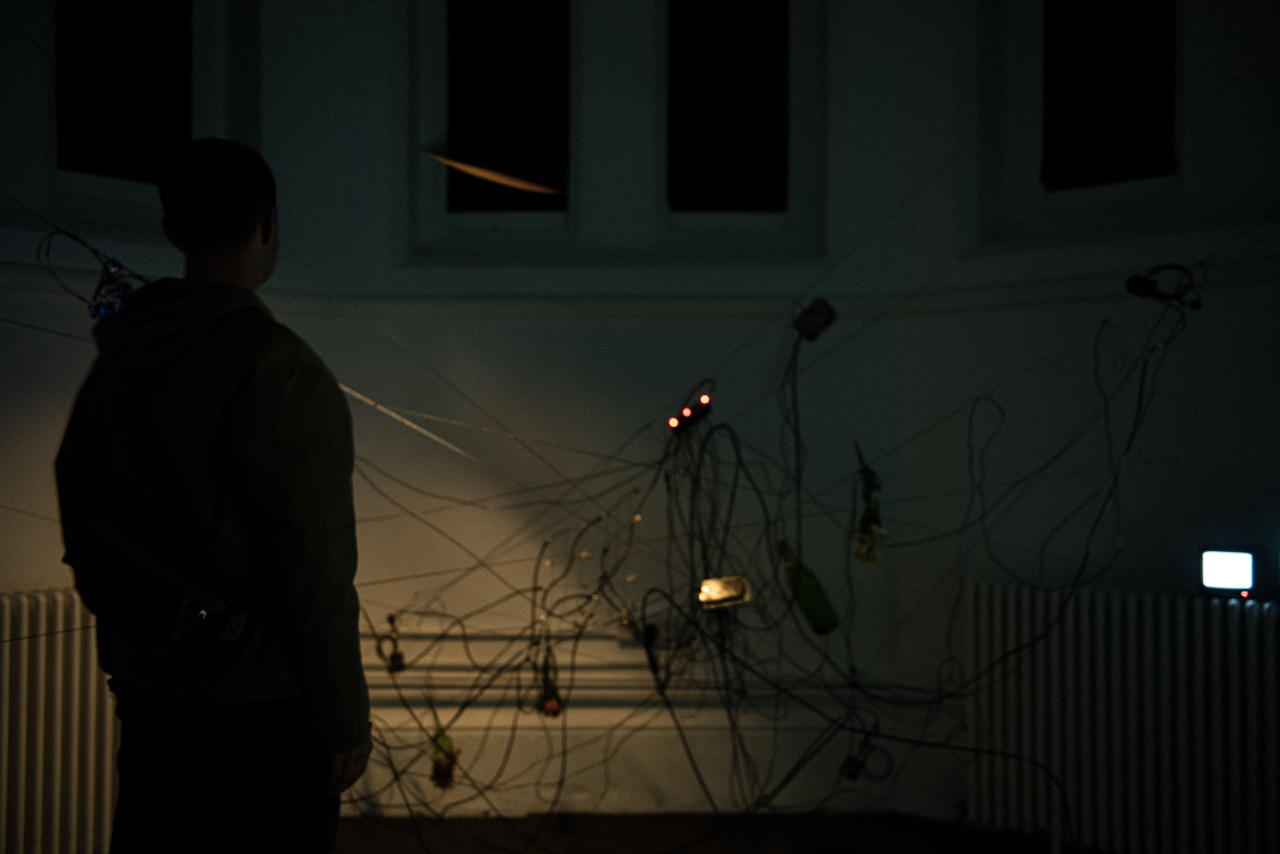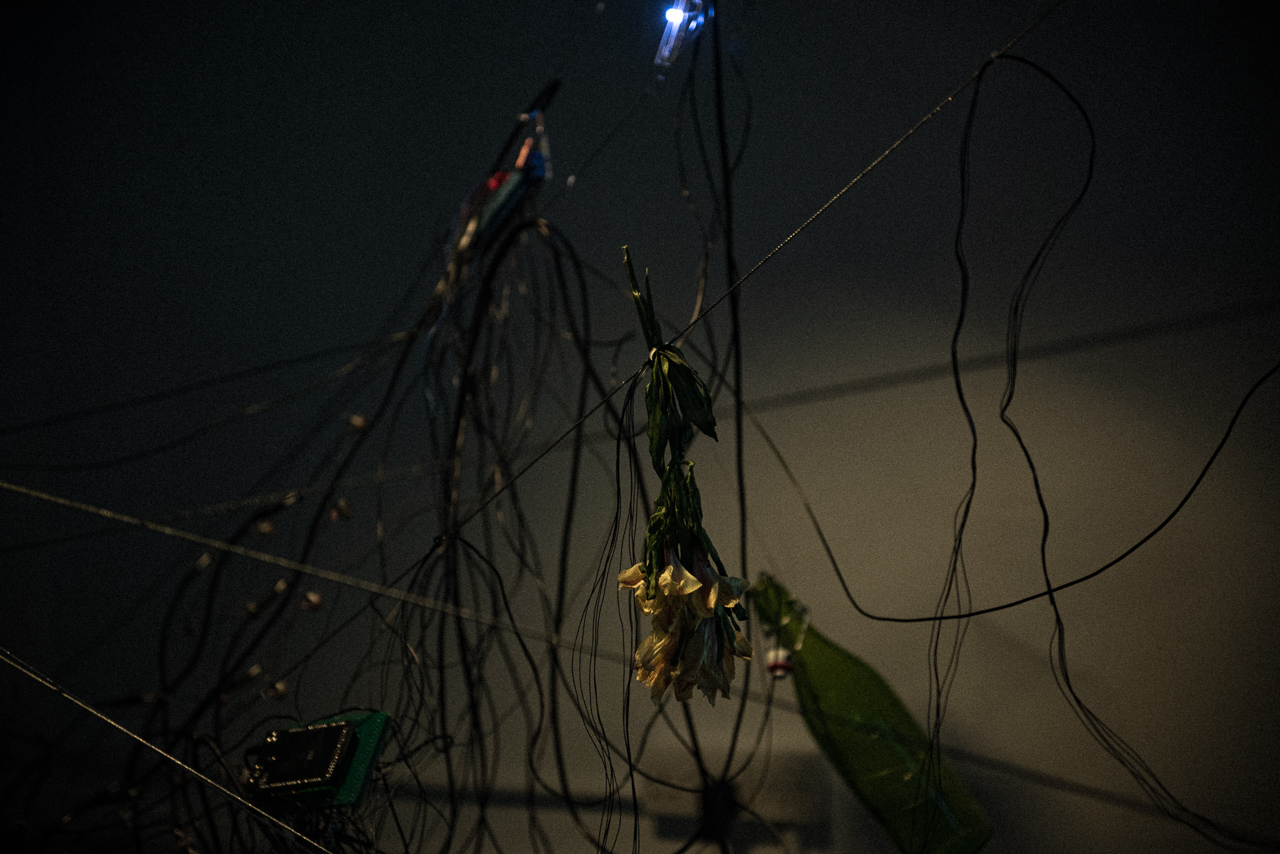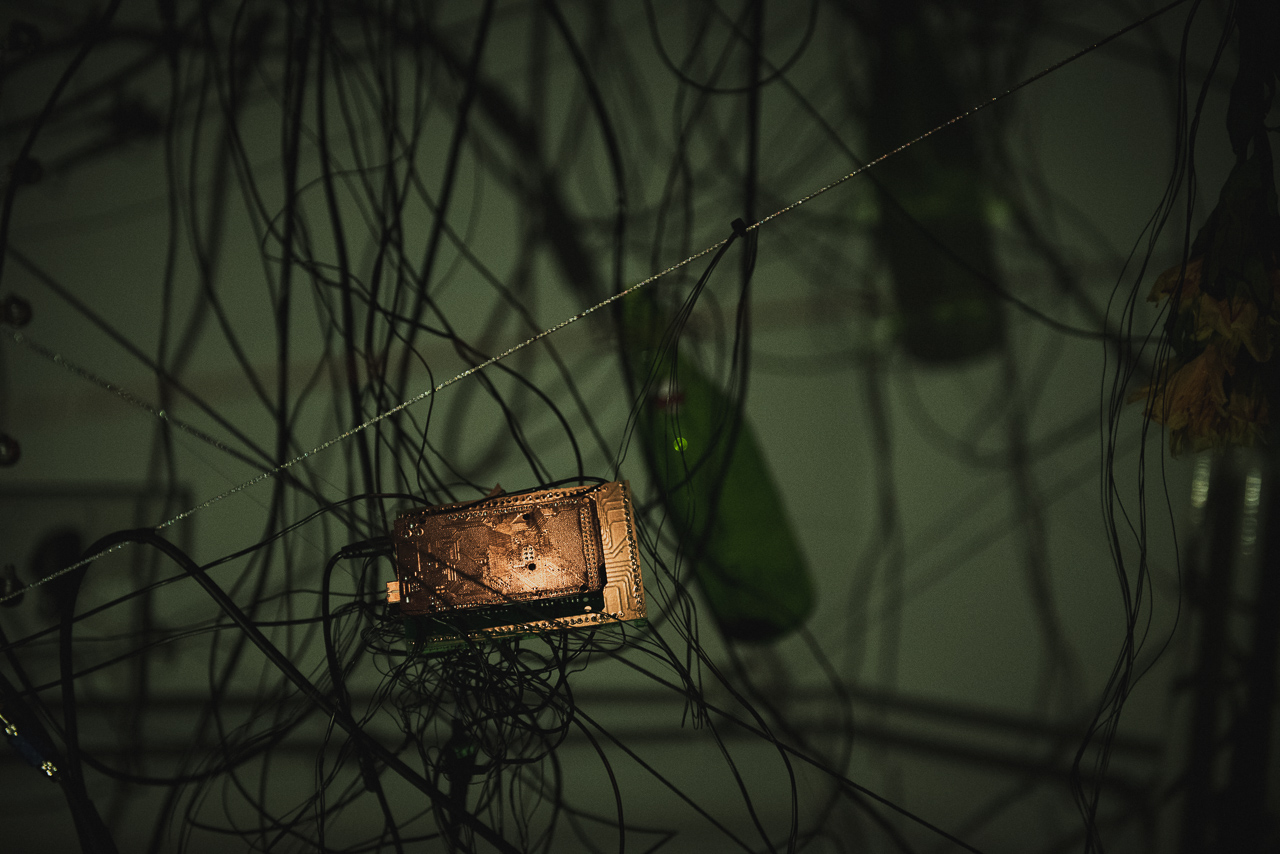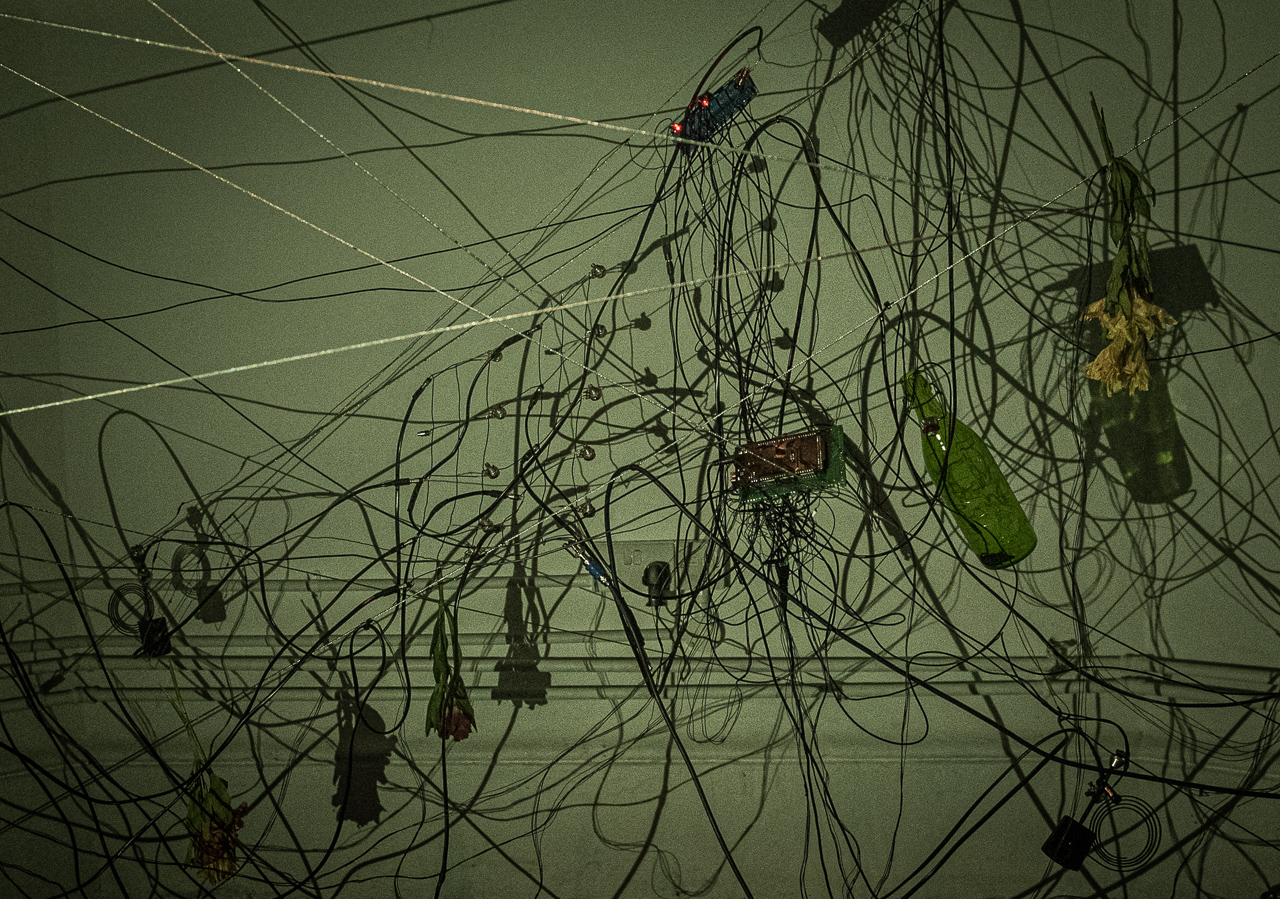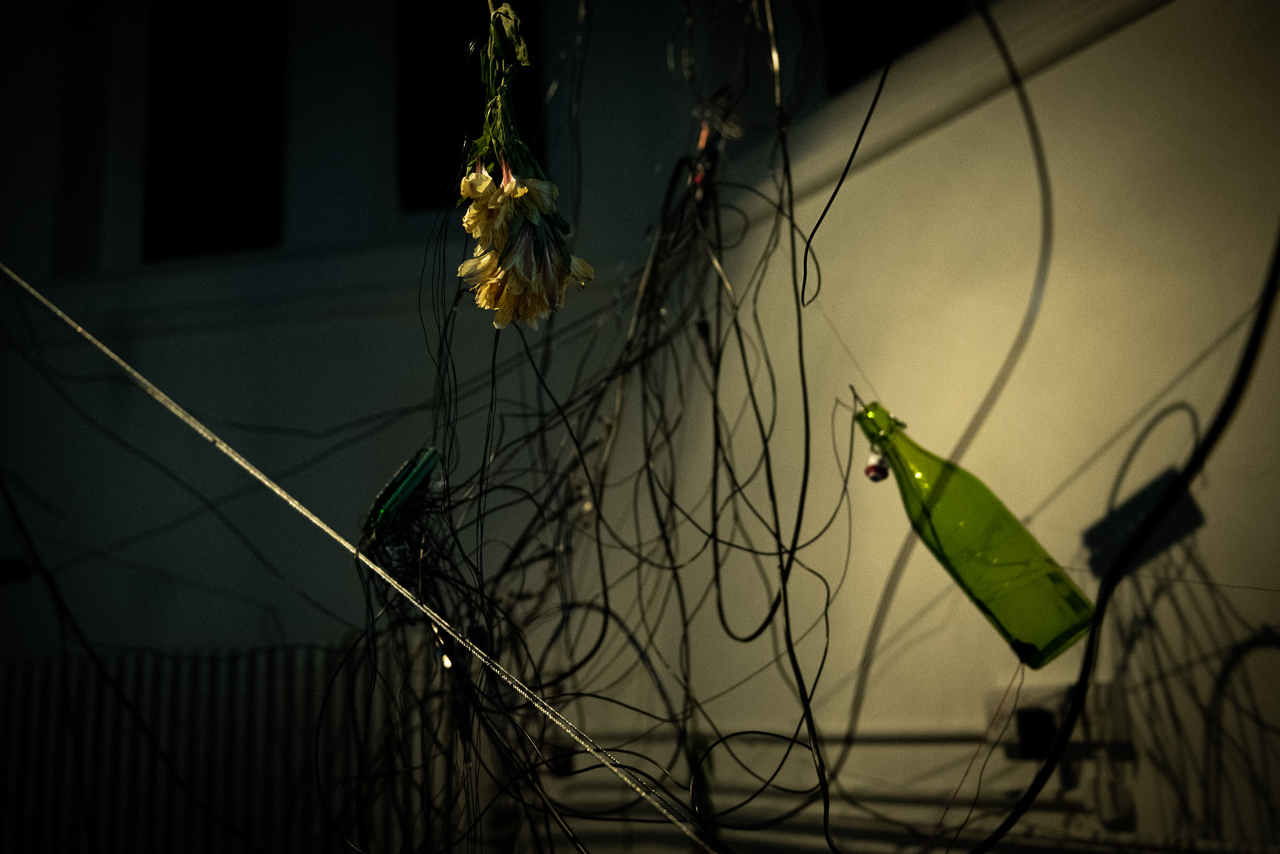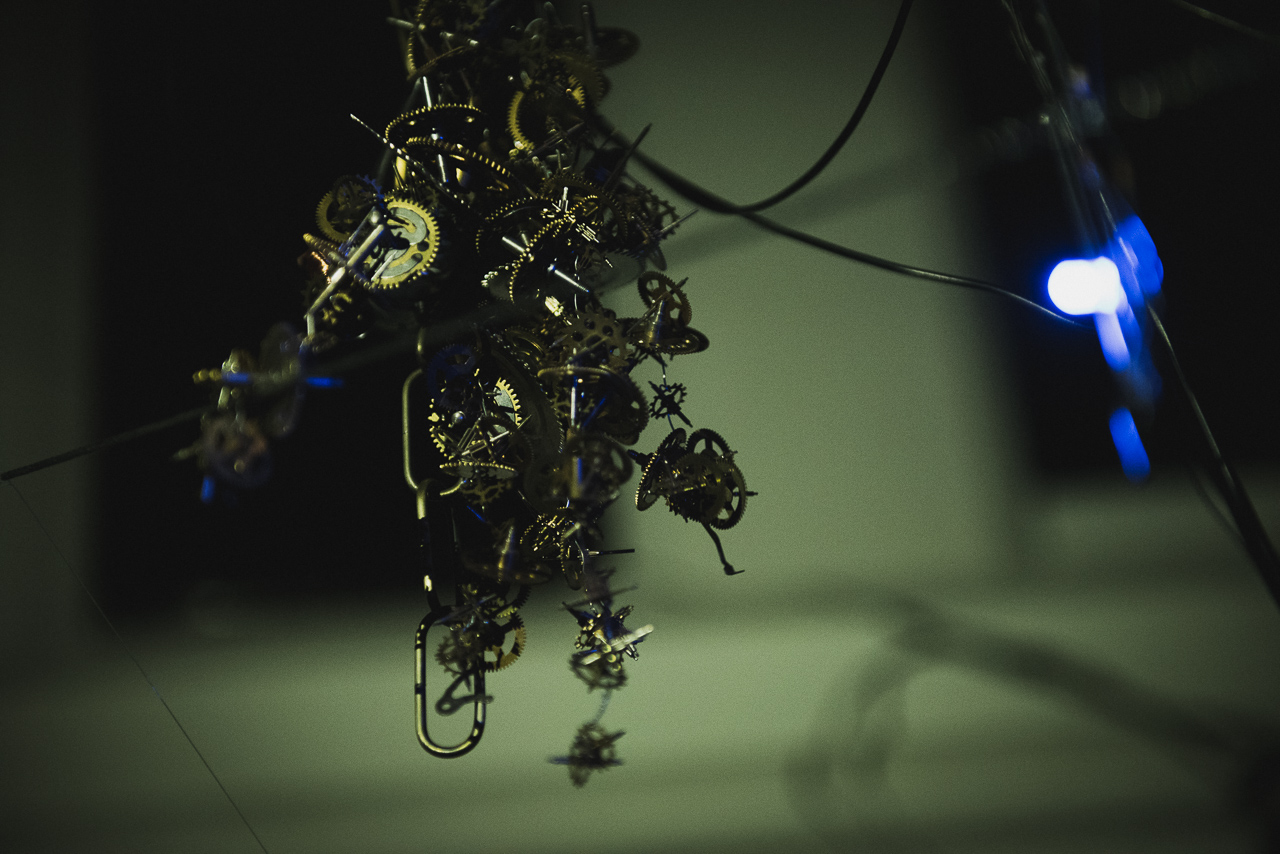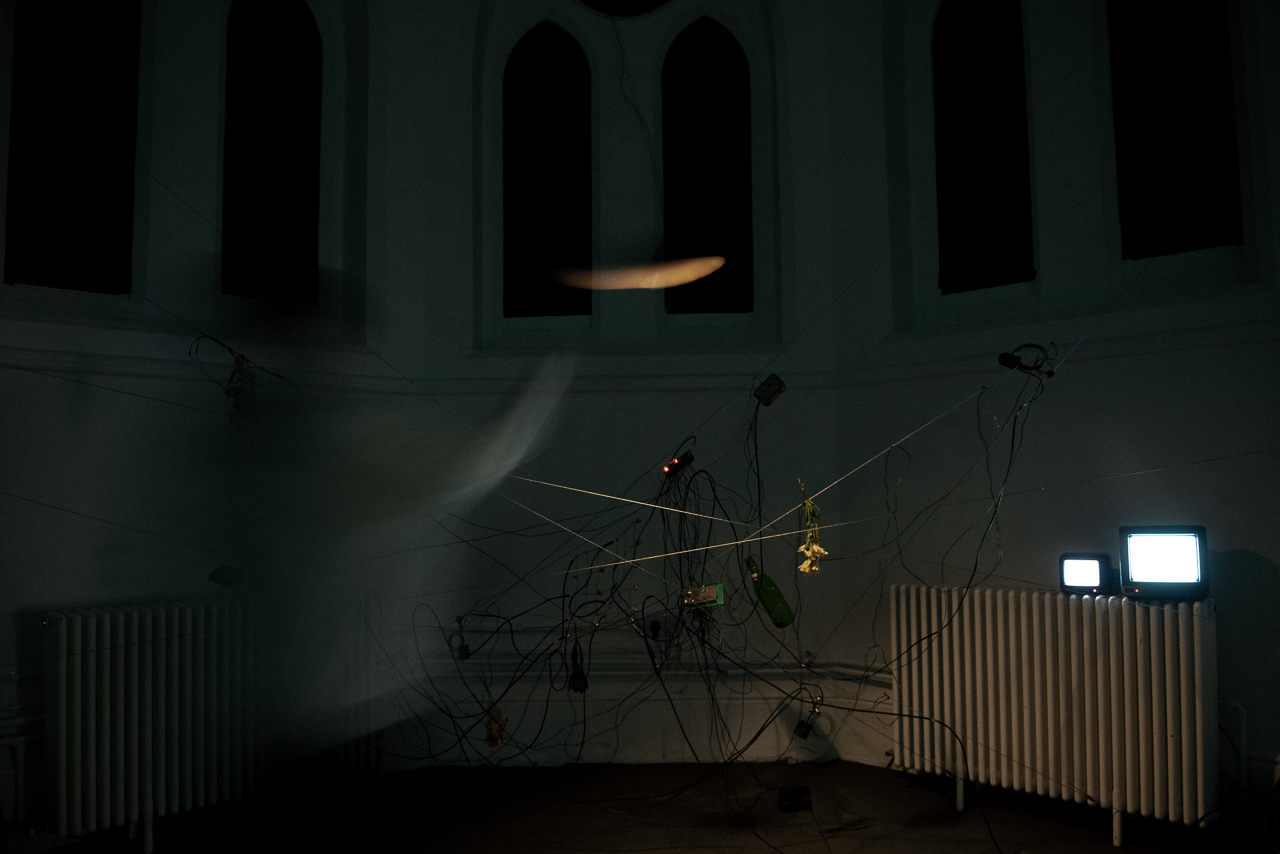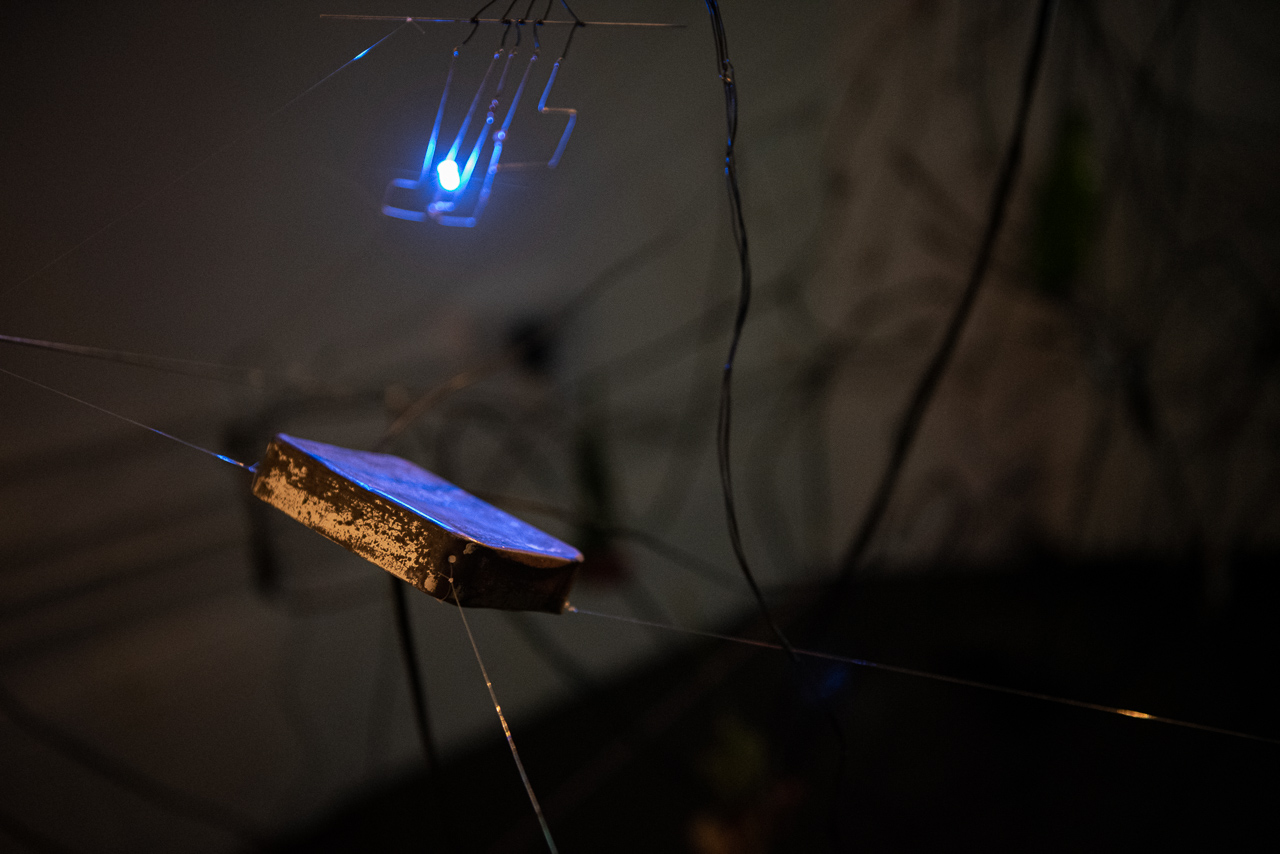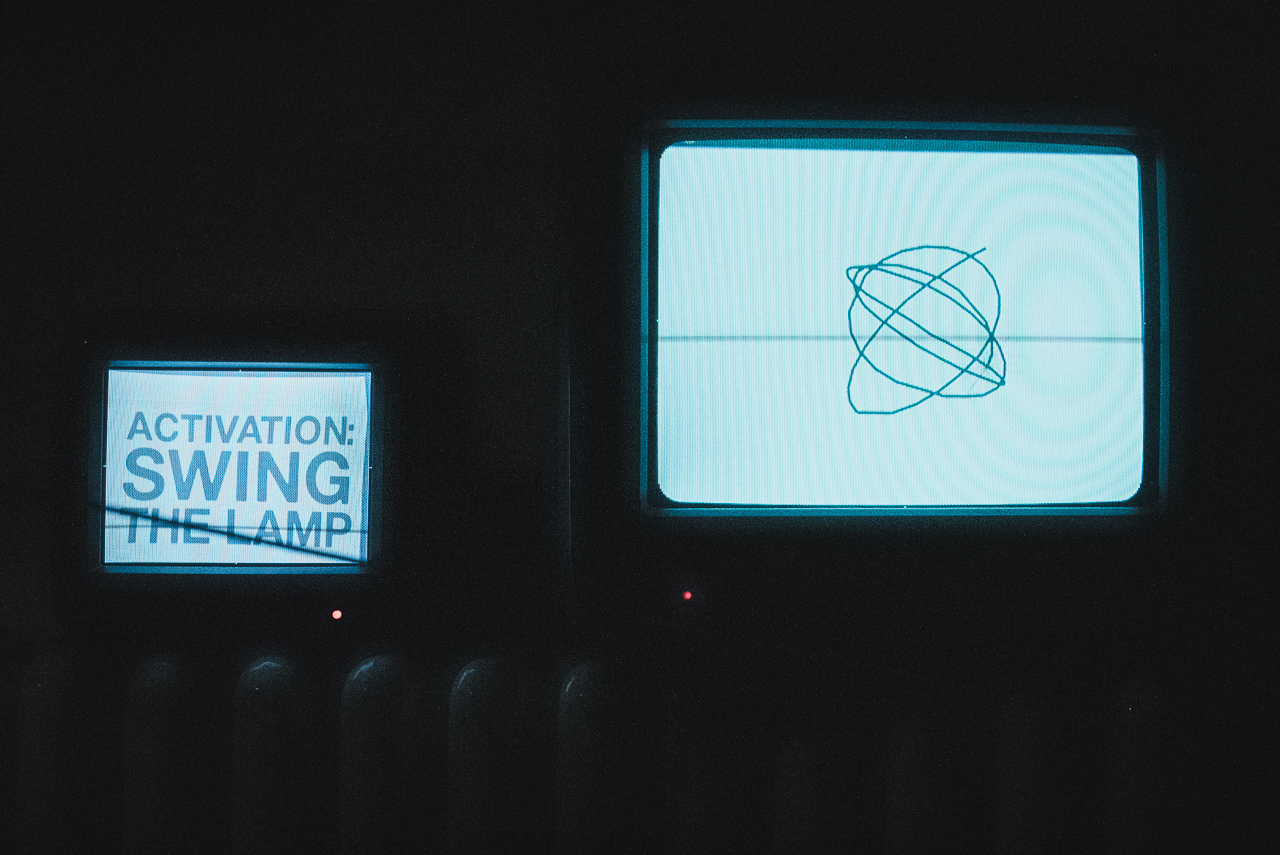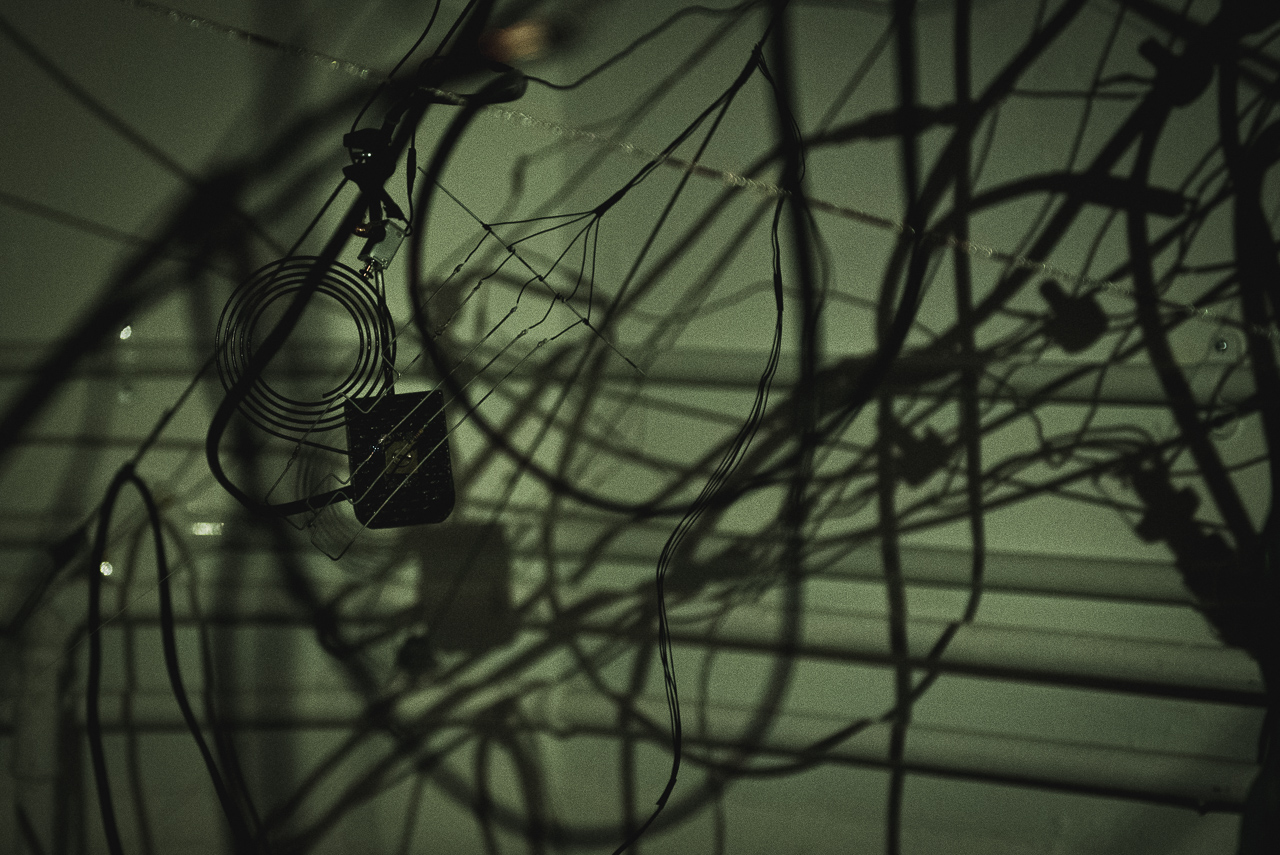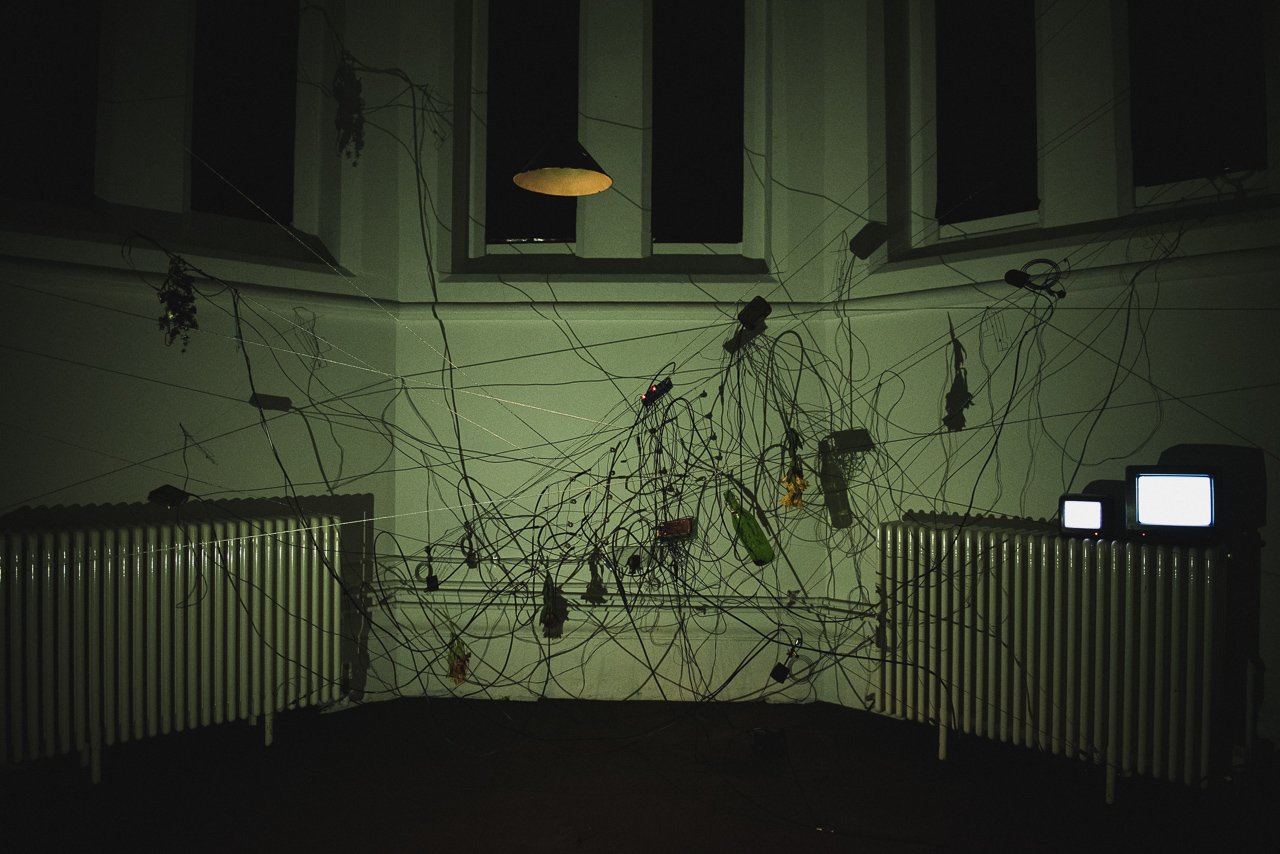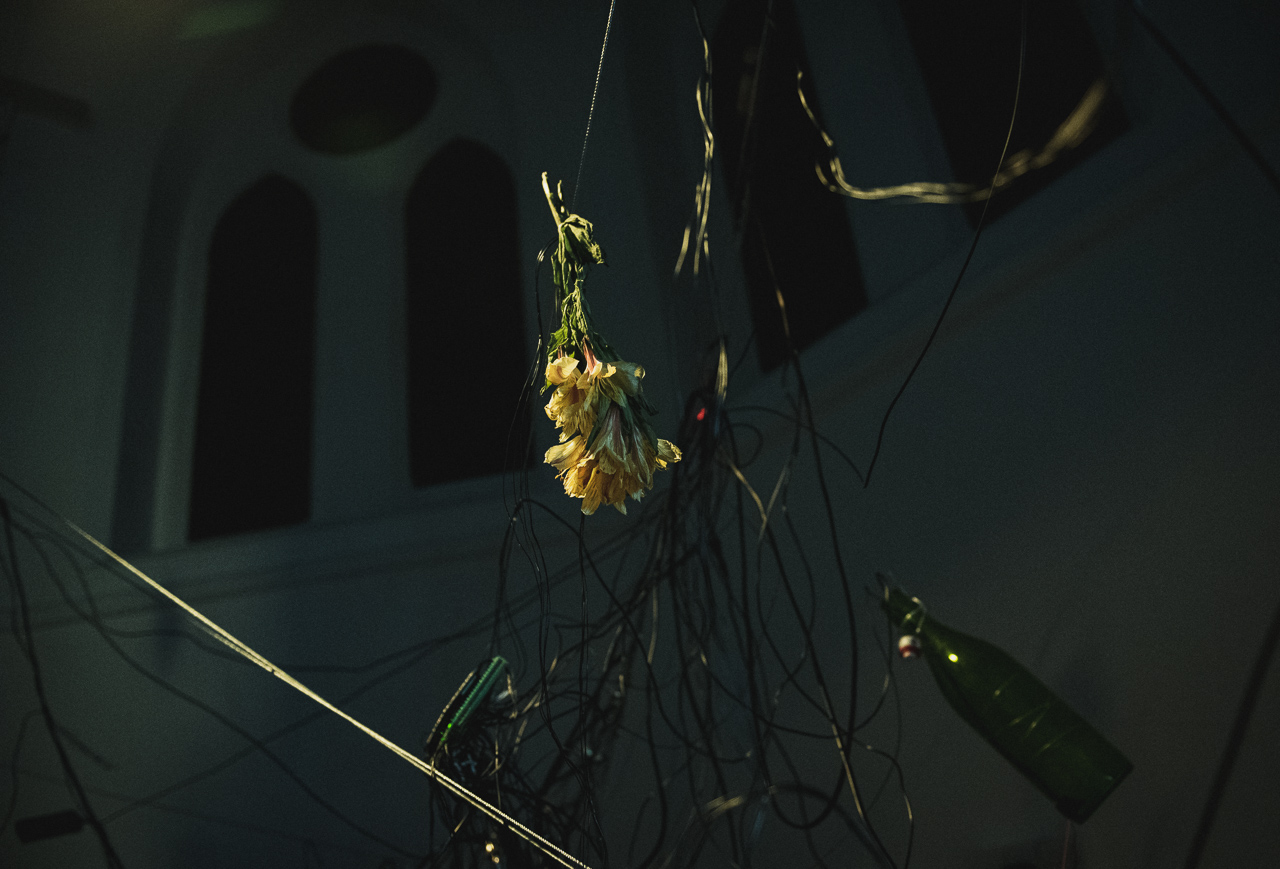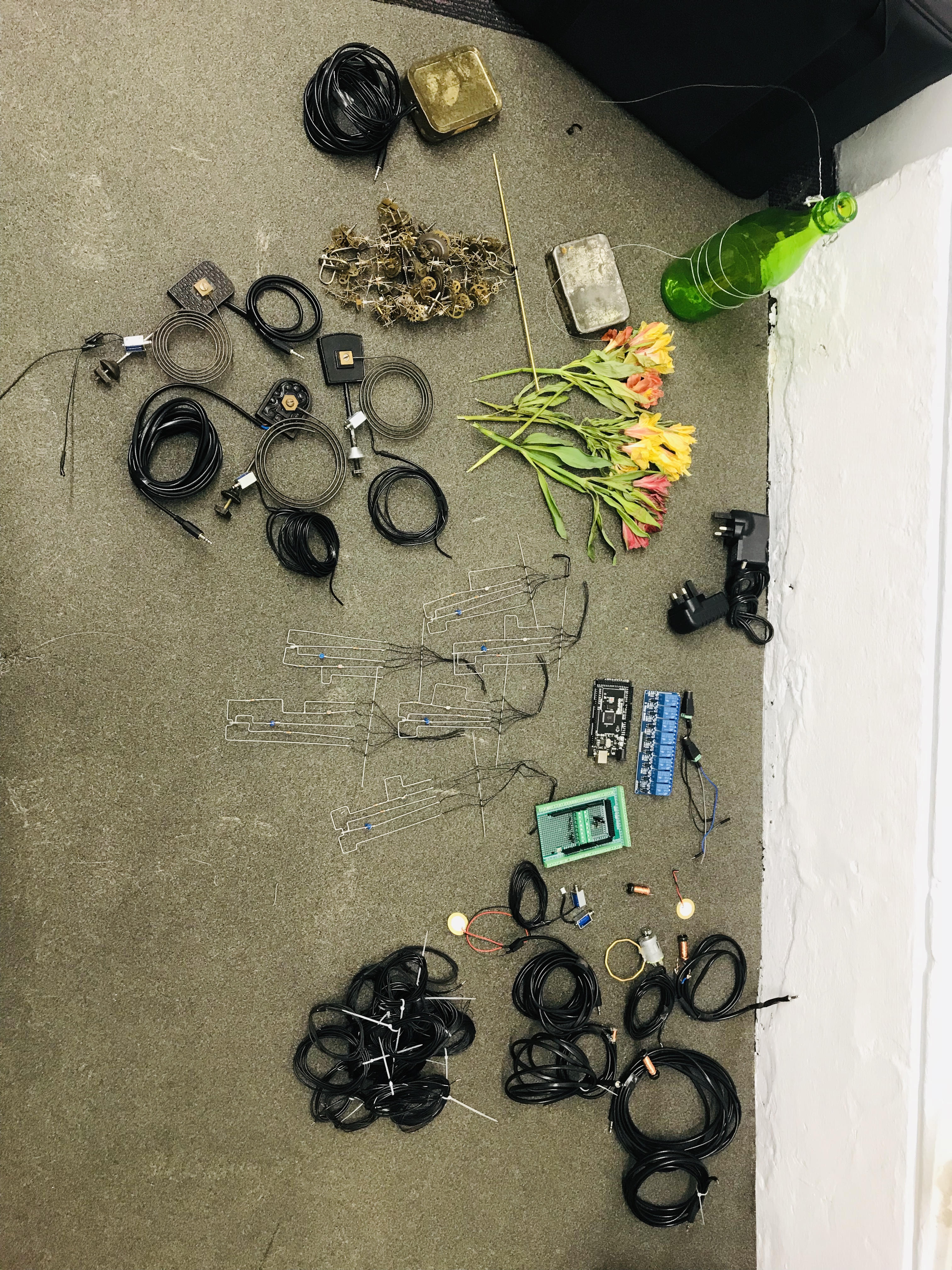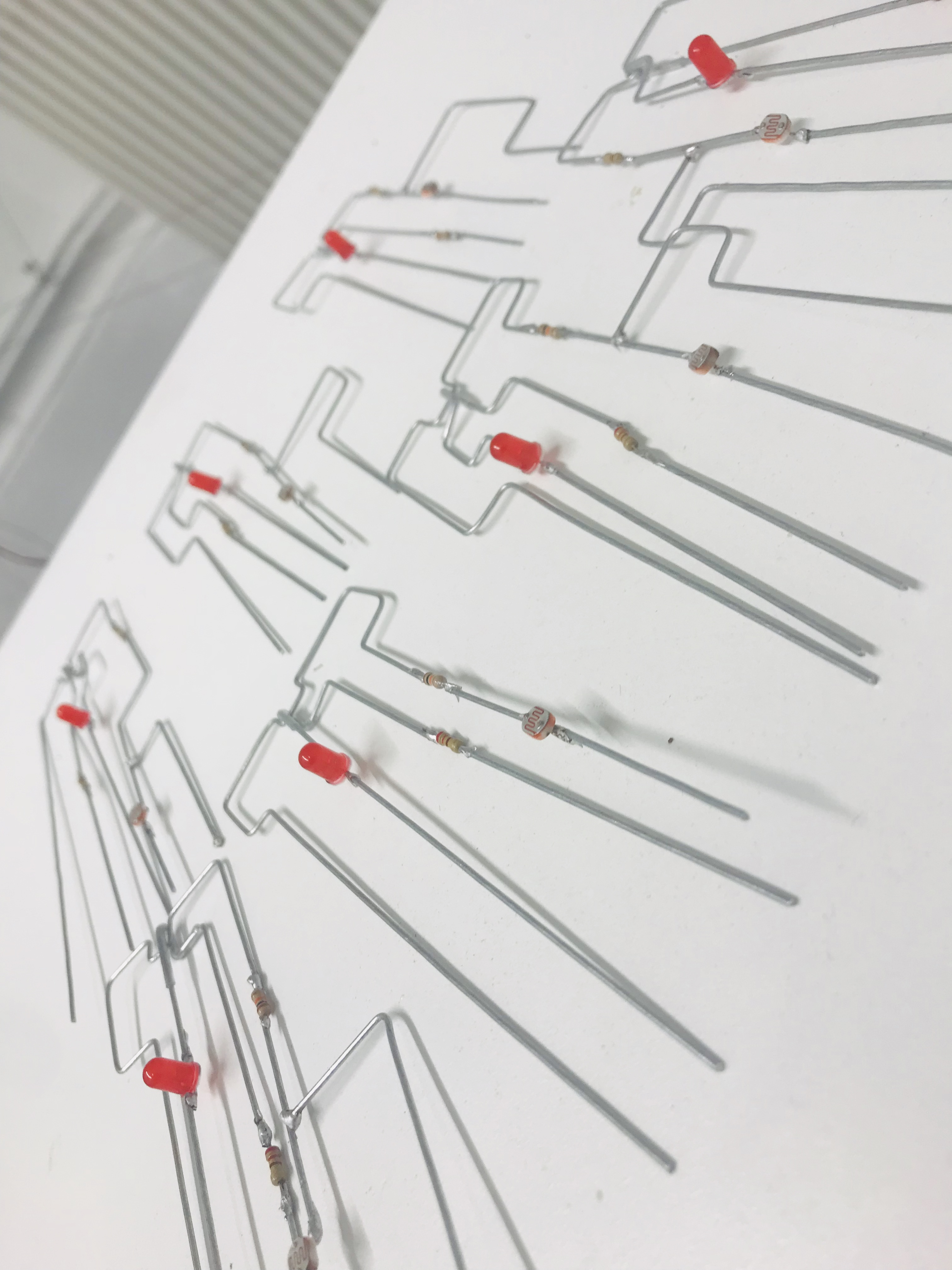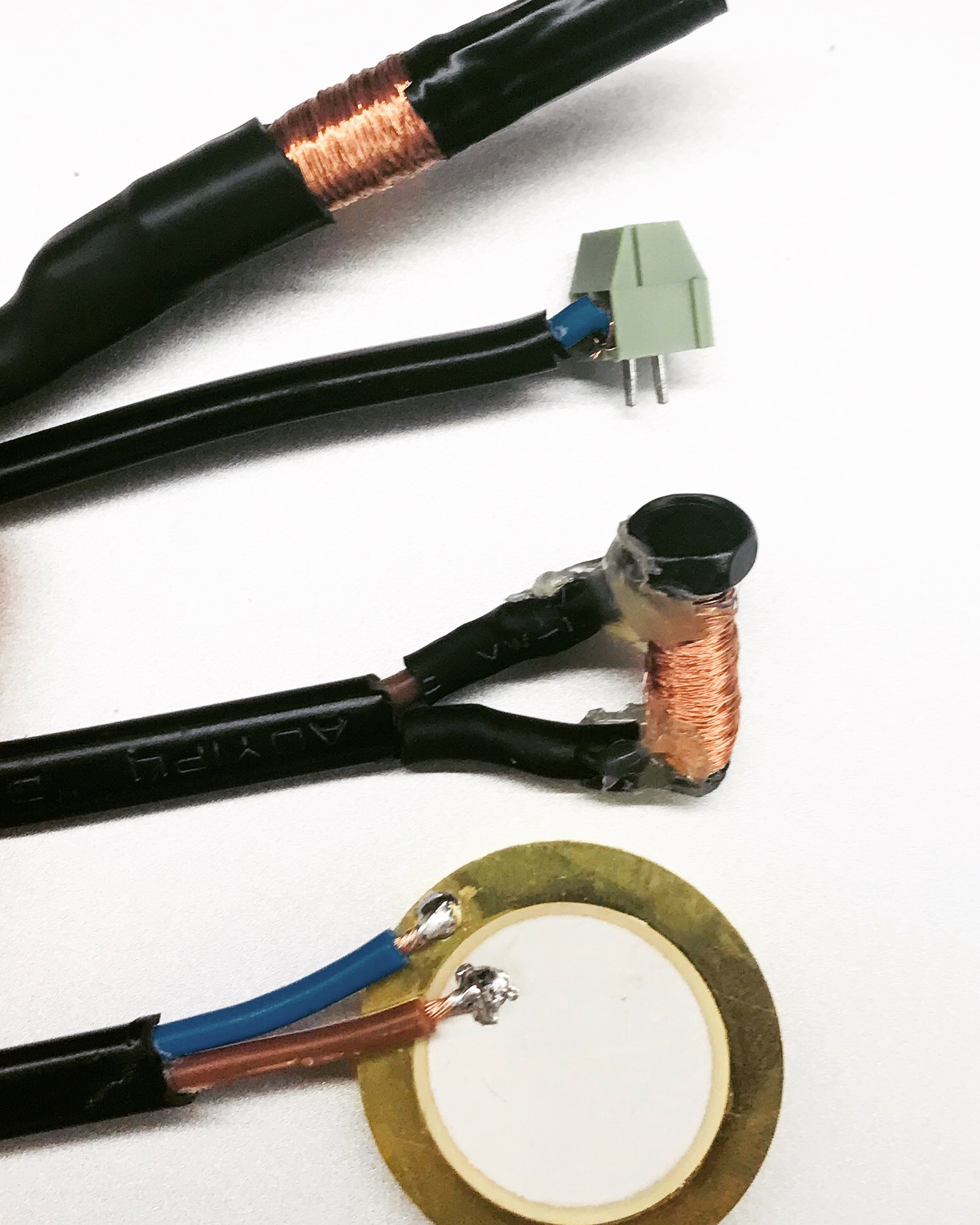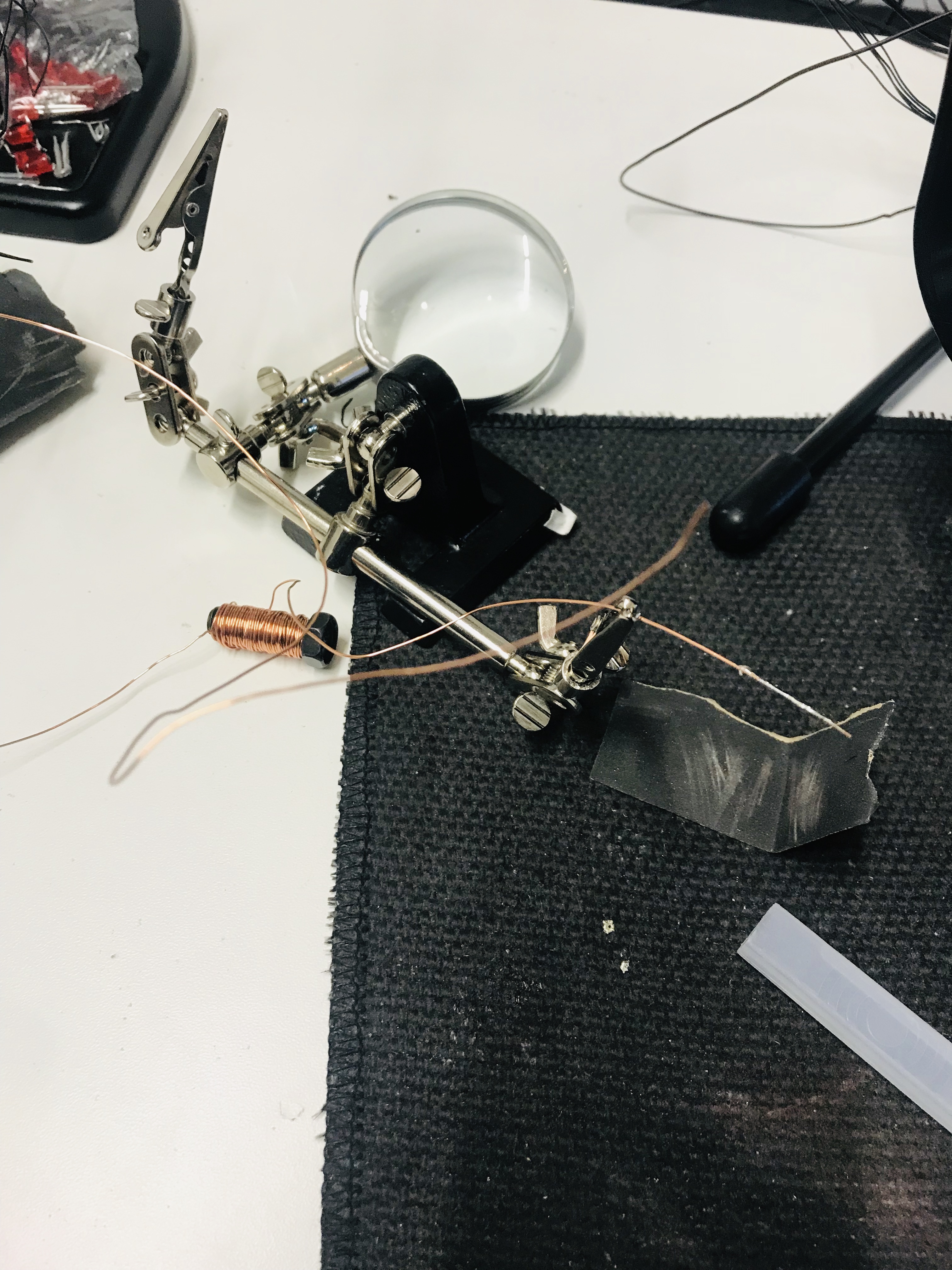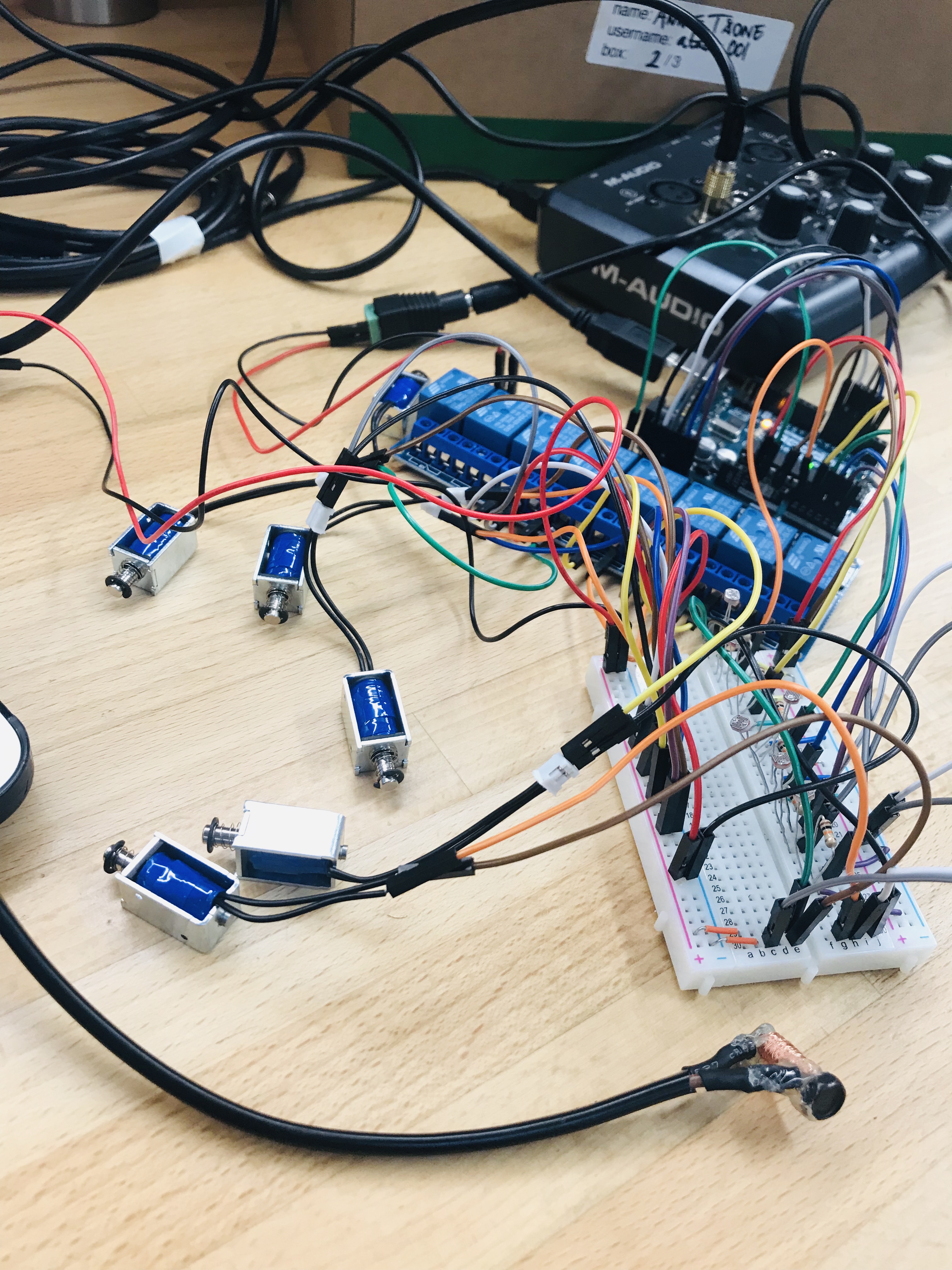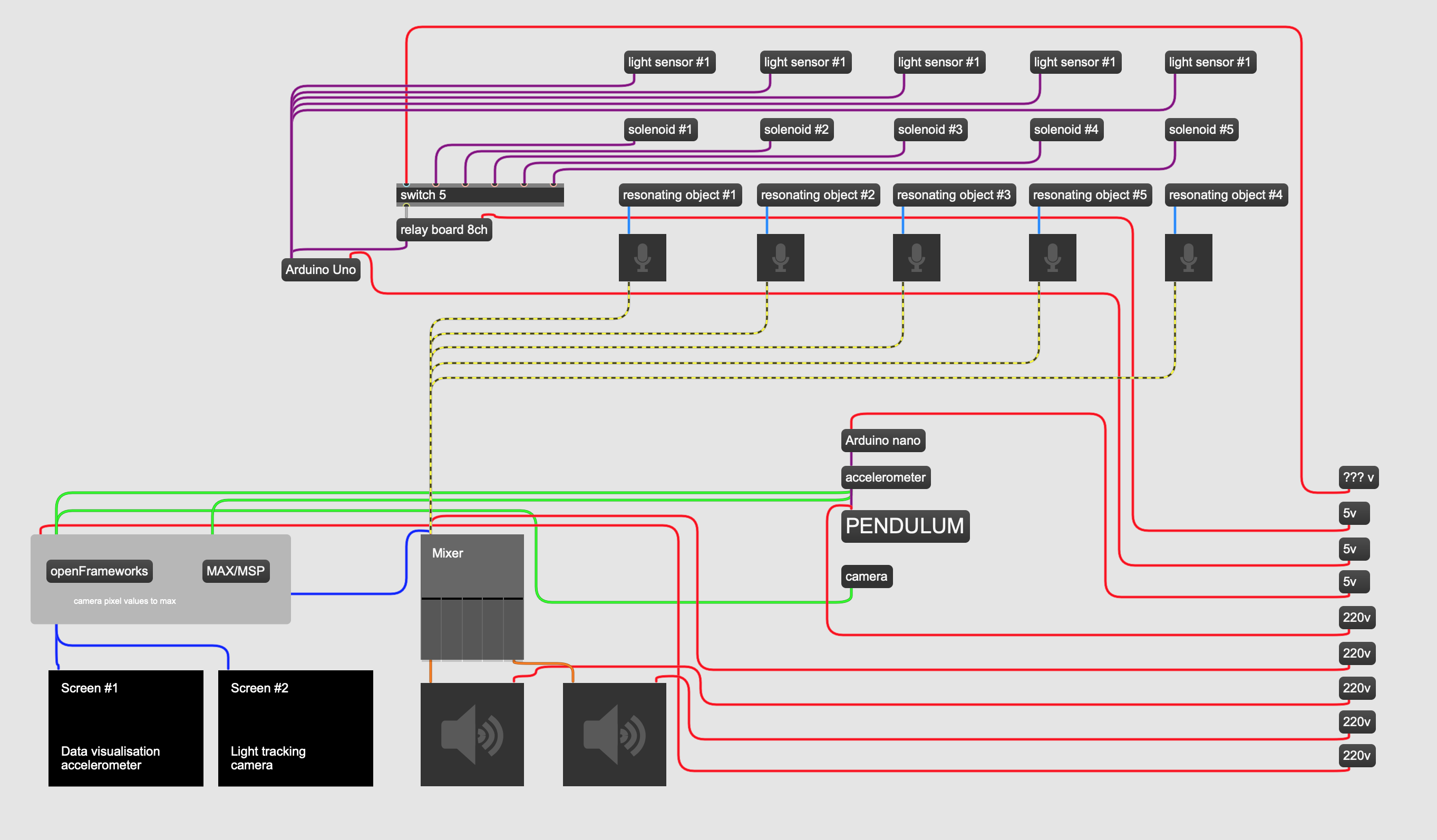EVERY
A mechanical sound installation that unravels a series of relationships between natural phenomena and chaotic forces of life.
Produced by: Annie Tådne
Introduction
EVERY is a constant and at the same time a fluctuating compound, where certain combinations, movements, orders, positions and shapes generate a resonating body. When actuated by force and light, mechanical rhythms begin to decay as victims of gravity, and magnetic hums make obscured fields tangible in sound-space. By letting commonplace and antiquated objects coexist with simple and functional electronic components, this piece reveals an intricate series of relationships between natural phenomena and chaotic forces of life. Every little thing is part of a larger system and Every is subject to corrosion.
Concept and background research
There are certain elementary bodies, whose combinations, movements, order, position, shapes, produce fire, and which, when their order is changed, change their nature as a compound; nor, are they in themselves like to fire, or to any other thing, which has the power of emitting particles to our senses, and affecting our touch by its application. [...] What other elements, and in what position, these same elements are combined, and what motions they reciprocally cause and suffer. For the same elements constitute the heaven, the sea, the earth, the rivers, the sun; the same elements constitute corn, woods, animals. But they are actuated and made effective by being mixed with other different elements and in different ways.
—Lucretius, early thoughts on atomism in the first-century BC poem “On the Nature of Things”.
EVERY consists of a web of still and floating components. Within this, by sight frozen, system, there are processes of motion. When forces of light are put into circulation, electronic signals are directed to an information-processing memory, where calculations take place. By following certain rules, signals are forwarded to trigger mechanical structures to perform an act of motion. This act of motion will create a resonating sound which will make the process of causation audible and apparent. EVERY reflects forms of life. May it be the composition of the universe, configurations of atoms, political climates, social relationships or environments in decline.
The movement of the light is determined by a participant, by which direction and with what force the lamp is pushed. The certain movement together with the formation of elements, create diffusions of rhythmic pulsations. These pulsations are decaying, due to gravity which forces the lamp to slow down. Every time someone swings the lamp, the movement will be different, and new constellations of rhythms will appear. But what will stay constant in the system is the position of the objects and the force of gravity. We are all preys stuck in cycles - slowly decaying. Related to the hopelessness and uncertainty that circulates in our present society. Although, these are feelings that are not unique to our generation. We can zoom out and see the miseries of every generation. As such, I want with this piece to mirror structures of life and hopelessness that parts with it, at both micro and macro modes of viewing.
Artists that influenced me to create this piece are John Cage, Steve Reich, John Whitney, Iannis Xenakis, Roland Kayn, Sarah Sze, Pierre Bastien and Felix Thorn, to name a few. They deal with aspects of time, space, materiality, mechanics, mathematics and natural phenomena in beautiful and poetic ways. I am also inspired by marble runs and pinball games, where there is one moment of interaction which triggers a larger system.
Technical
Most of the technical aspects lie in the physical components. The system comprises of seven sections that could be a parable to a body. The wires are the veins, the microcontroller is the brain and the relay board is the heart.
The sun
A lampshade with a lightbulb is suspended from the ceiling. The light is what gives energy and makes the system come alive. The movement of the swinging light determines how the smaller components should act.
The senses
Small open circuits consist of LDRs (light sensors) and LED lights. They are the components that measure the amount of light and sends signals to the brain to take further action. When a certain amount of light is reached, a cue is sent to activate the sonic components, and the LED light up as an indication. Each circuit is mounted in close relation to the resonating objects.
The brain
Every electronic component is connected to ports on an Arduino Mega microcontroller. This is where all the electronic signals are directed to, and where decisions are being made. When signals from the LDRs reach a certain value, it activates an operation that triggers the resonating objects.
The heart
Every mechanical component is connected to an 8-channel relay board. When the LDR reaches a threshold and the brain decides to activate the system, a signal is received by the relay board, and a small electric current is pumped out to activate to the motors.
The organs
The resonating objects comprise of three clock chimes, one bottle, two boxes and a cluster of cogs originating from old clocks. The cluster of cogs surrounds a vibrating motor. The rest of the objects are connected to a solenoid. When the relay sends power through, it activates the electromagnetic coil of the solenoid or motor, which triggers a movement that becomes audible. The motor starts to vibrate and makes the cogs clang. The push and pull solenoids tap into the chimes and boxes which creates a percussive sound.
The limbic system
For us to be able to experience the processes within the system, we need emotions that we can react to. To be able to feel it we have to amplify the sound of the mechanical movements. This is executed by attaching microphones to the sounding objects and the relay board. The microphones consist of contact microphones and electromagnetic microphones that were created specifically for this context. They are all connected through an open circuit 10-channel mixer, which is suspended within the web of wires. The magnetic field created around the coils in the relay, solenoids and motor are being picked up by the electromagnetic microphones. Every signal of sound is merged into one through the passive analogue mixer and amplified in MaxMsp together with additional distortion and reverb.
The big brother
A camera is hidden on the floor. This camera tracks the movement the light takes and visualises it on a CRT monitor. This is executed by using openCV and blob tracking in openFrameworks. On an additional CRT monitor instructions on how to activate the system is displayed.
Future development
This piece has a lot of room for tuning and modification. One of the initial ideas, which I would like to implement in the future, is to add resistance to the movement of the swinging lamp. To let the lamp be able to swing freely, but then slow down or even stop in certain positions. With this, I would like to achieve a feeling of alienation, where the perception of time and gravity gets distorted. This would require some engineering skills, but might be accomplished with motors, electromagnets or a hydraulic system.
I would like to further develop the sonic environment and experiment more with the amplification and the transducers. A first step would be to add more microphones, to get more variation and richness to the sounds. It would also be interesting to see if I could use the movement of the lamp to modulate the sound, such as being the parameter of a filter for example.
In addition, I would like to see the installation in a larger scale. To be able to grasp the micro and macro world to a further extent, I would like the installation to be experienced from a distance and at the same time something you can step into, and where you cannot perceive the smaller components until you come close. This would also mean making the circuits and components even smaller, to create a feeling of immenseness.
Self evaluation
I was determined from the beginning that I wanted the piece to have a simple moment of interaction, that the underlying processes were to be immediate and transparent. As my research projects dealt with transparency, translation and transmission it was something important that I wanted to be evident, and I believe this is one of the things I am most satisfied with.
The composition of the installation was what worried me the most throughout the process of building it. I was worried the chaos of the wires would not come across as well-executed and that it would not add to the concept, but I am glad I stuck with my idea and let the wires be messy. I believe the chaos, in the end, was what elevated the conceptual idea, and made it come through to the audience.
When I started working on this piece it was as an exploration of the world of physical computing. This meant learning new techniques as a went along, often by being very straightforward and trying things out. Several ideas and components got thrown away in the process, and I spent a lot of time and effort to accomplish certain parts, some of them which ended up being minor details in the overall result. This explorative process has both pros and cons. It allowed me to be free in my decisions and taught me new skills as I went along. Although, I could feel that I sometimes went too far away from the underlying concept, and the theory behind the project was sometimes put at risk.
This explorative method also made the time run out in the end. There are some last-minute compromises which could have been better presented, and some parts that I simply did not have time to finish. Such as; creating a simple way to turn the installation on and off, some wires that could have been better installed, adding a weight to the lamp to reduce the flimsiness when you push it, better quality in the making of the microphones, create a more complex animation of the light with greater details and making the light tracking and animation run smoother.
I am overall satisfied with the result, and glad that I decided to take a new path to create a sonic and interactive installation, and not just continue with my performance project from last year. I am satisfied with the aesthetics and think it has a connection to and similarities with my project from last year. Interesting for the future would also be to see if I can in a coherent way merge them two.
References
• yafr~ Reverb by Randy Jones
• ofxOpenCV
• Controlling a Solenoid with an Arduino
• Control High Voltage Devices – Arduino Relay Tutorial
• Make a Contact Microphone
• Electromagnetism
• Listen to Weird Sounds from Electromagnetic Fields
• Lighting Multiple LED’s with Multiple Photo Resistors
• Simple two line output combiner
• 5 Channel passive Audio Mixer
• Marble run by DoodleChaos
• Felix’s Machines by Felix Thorn
• Pierre Bastien
































































